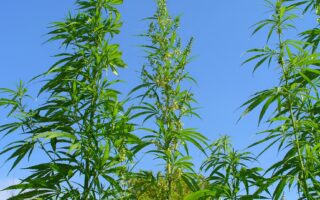Exploring Ganja: The Journey of Nature’s Green Gift
In the verdant embrace of nature, where sunlight dances upon the leaves, one plant has persisted through time, culture, and controversy: ganja. Often intertwined with tales of ancient rituals, artistic expression, and, more recently, medical innovation, ganja—commonly known as weed—has carved a significant niche in human history. As society’s perspective on cannabis continues to shift, this article invites you to journey through the intriguing world of ganja, exploring its origins, uses, and the multifaceted role it plays in our modern lives. From the sacred texts of the past to the cutting-edge research of today, join us as we unravel the complexities of this green herb and its enduring impact on both individuals and communities alike.
Table of Contents
- Exploring the Origins and Cultural Significance of Ganja
- Understanding the Health Benefits and Risks of Cannabis
- Navigating the Legal Landscape: What You Need to Know
- Practical Tips for Responsible Use and Consumption
- Q&A
- Wrapping Up
Exploring the Origins and Cultural Significance of Ganja
The story of ganja is woven into the rich tapestry of human civilization, stretching back thousands of years across various cultures. Its earliest known use dates to around 500 BC in Central Asia, where it was initially cultivated for its fibers and seeds. As exploration and trade flourished, ganja began to make its way into different regions, revealing its psychoactive properties and medicinal benefits. Ancient texts from India, China, and the Middle East depict ganja as a sacred herb, integral to spiritual practices and healing rituals. Today, its historical roots continue to influence contemporary cultural perspectives, emphasizing a complex relationship with this versatile plant.
In many cultures, ganja symbolizes different things, ranging from spirituality and enlightenment to counter-culture movements and social equality. For instance, in Jamaica, it is not just a recreational substance but an integral part of Rastafarian culture, where it is often referred to as “the herb” and viewed as a means to connect with the divine. Conversely, in the United States and various Western nations, it has experienced periods of prohibition and acceptance, reflecting societal attitudes towards cannabis as a whole. Understanding its cultural significance involves appreciating how societal views have evolved and recognizing ongoing conversations about legalization and medicinal uses. Below is a brief overview of how ganja is perceived across different regions:
| Region | Cultural Significance |
|---|---|
| India | Spiritual and medicinal use in Ayurvedic practices |
| Jamaica | Central to Rastafarian beliefs and rituals |
| United States | Symbol of counter-culture; evolving legalization |
| China | Traditional medicine for various ailments |
Understanding the Health Benefits and Risks of Cannabis
Cannabis, often colloquially referred to as ganja or weed, has garnered considerable attention for its potential health benefits. Research indicates that the plant contains various compounds known as cannabinoids, such as THC (tetrahydrocannabinol) and CBD (cannabidiol), which may offer therapeutic effects. Some of the recognized health benefits include:
- Pain Relief: Many users report a significant reduction in chronic pain through cannabis use.
- Anti-inflammatory Properties: Certain cannabinoids can help reduce inflammation, potentially benefiting those with conditions like arthritis.
- Anxiety and Stress Reduction: Many individuals find relief from anxiety and panic disorders, leading to improved mood.
- Appetite Stimulation: Cannabis is often used to counteract appetite loss due to conditions like cancer or HIV/AIDS.
However, it’s vital to consider the associated risks that accompany cannabis use. While many users enjoy positive experiences, others may encounter negative effects. Some of the potential drawbacks include:
- Cognitive Impairment: Short-term memory and concentration can be negatively affected, especially in users who consume high-THC strains.
- Dependency and Withdrawal: Regular use can lead to tolerance, with some individuals experiencing withdrawal symptoms upon cessation.
- Psychological Effects: In some cases, cannabis can exacerbate symptoms of anxiety or trigger psychotic episodes, particularly in predisposed individuals.
To better understand these health benefits and risks, here’s a simple comparison:
| Health Benefits | Health Risks |
|---|---|
| Pain Relief | Cognitive Impairment |
| Reduced Inflammation | Dependency Potential |
| Improved Mood | Psychological Effects |
| Appetite Stimulation | Risk of Addiction |
Navigating the Legal Landscape: What You Need to Know
Legalization of cannabis has varying implications depending on the jurisdiction, and understanding the local laws is essential for both users and businesses. In regions where ganja is legal, regulations often govern cultivation, distribution, and consumption. It’s important to familiarize yourself with the local statutes, as they can dictate everything from possession limits to age requirements. Here are a few key points to consider:
- Licensing: Businesses involved in the cannabis trade may need specific licenses to operate legally.
- Usage Zones: Certain areas may prohibit consumption in public spaces.
- Transportation: State laws can vary on how cannabis can be transported, including limits on amounts.
As more states and countries explore legalization or decriminalization, the legal landscape is continually evolving. It is vital for stakeholders to stay updated on these changes, as they can substantially impact both personal and business activities related to ganja. Below is a simple representation of the key factors influencing the cannabis market:
| Factor | Influence |
|---|---|
| Legal Status | Affects market access and consumer behavior. |
| Public Opinion | Can shape future legislation and reform. |
| Health Regulations | Influences product quality and safety standards. |
Practical Tips for Responsible Use and Consumption
When it comes to enjoying ganja responsibly, mindfulness plays a crucial role. Start by understanding your own limits; this entails knowing how different strains affect you personally. Everyone’s body reacts uniquely to cannabis, so it’s essential to experiment in a safe environment. Create a comfortable setting that allows you to relax and unwind, whether you’re consuming it socially or solo. Make a conscious effort to track your intake, perhaps by keeping a simple journal to note the effects of various strains and dosages. This practice can help you make informed choices for the future.
Another vital aspect of responsible consumption is ensuring you’re well-informed about local laws and regulations concerning cannabis use. Engage with reputable sources to deepen your understanding of the benefits and potential risks associated with ganja. In addition, consider incorporating some of the following practices to enhance your experience:
- Hydrate: Keep water nearby to stay hydrated.
- Mind the environment: Choose your consumption setting wisely.
- Respect others: Ensure that those around you are comfortable with your choice to consume.
- Educate yourself on dosage: Start low and go slow to find what feels right.
Q&A
Q&A: Unraveling the Mystique of Ganja Weed
Q1: What exactly is ganja weed?
A1: Ganja weed, often simply referred to as ganja, is a term that originates from the Sanskrit word “gāñjā,” meaning “hemp.” This herb is the flowering plant Cannabis sativa, prized for its psychoactive properties and diverse uses in both recreational and medicinal contexts. While often associated with relaxation and euphoria, its composition can yield a variety of effects depending on concentration and strain.
Q2: How does ganja differ from other cannabis terms?
A2: The term ganja is mainly used in certain cultures and regions to denote marijuana, especially the part of the plant that is smoked. However, cannabis encompasses a broader classification that includes both marijuana (high in THC) and hemp (low in THC, often utilized for textiles and food). Essentially, all ganja is cannabis, but not all cannabis is ganja.
Q3: What are the psychoactive components of ganja?
A3: The most prominent psychoactive compound in ganja is tetrahydrocannabinol (THC). THC interacts with the brain’s cannabinoid receptors, leading to the characteristic “high” associated with marijuana use. Additionally, other compounds called cannabinoids, including cannabidiol (CBD), may contribute to its effects, particularly in medicinal applications where psychoactivity is not the primary goal.
Q4: Are there medicinal benefits to using ganja weed?
A4: Indeed, ganja has gained recognition within the medical community for its potential therapeutic benefits. Patients often report relief from chronic pain, anxiety, nausea, and even seizures when using cannabis products rich in THC or CBD. However, it should be noted that research is ongoing, and individual responses can vary widely.
Q5: How is ganja typically consumed?
A5: Ganja can be consumed in various forms, including smoking, vaping, edibles, and tinctures. Each method offers a different onset time and intensity of effects. For example, smoking or vaping typically results in quicker onset, while edibles may take longer to take effect but can produce a more prolonged high.
Q6: What should newcomers to ganja know before trying it?
A6: For those venturing into the world of ganja for the first time, it’s important to start low and go slow. Begin with a small dose to gauge your reaction, especially with edibles which can be deceptively potent. Being in a comfortable environment and having a trusted friend nearby can also enhance the experience.
Q7: What are the legal considerations surrounding ganja weed?
A7: The legality of ganja varies widely around the globe. Many regions have decriminalized or legalized its use for recreational and/or medicinal purposes, while others maintain strict prohibitions. Familiarity with local laws is essential for anyone considering ganja use to ensure compliance and safety.
Q8: Can ganja have negative effects?
A8: While many enjoy the effects of ganja, it can also lead to negative experiences, particularly with excessive use. Side effects may include anxiety, paranoia, and impaired cognitive function. Long-term heavy use can also lead to dependence. Moderation and mindful consumption are key.
Q9: How has the perception of ganja weed evolved over time?
A9: Historically shrouded in stigma, the perception of ganja has undergone significant transformation, particularly over the last few decades. Advocacy, research, and changing legal landscapes have sparked a growing recognition of its potential benefits, making ganja more socially accepted in many circles, particularly among younger generations.
Q10: What does the future hold for ganja weed?
A10: The future of ganja looks promising, with ongoing research exploring its potential benefits and applications across various fields. As society continues to challenge old myths and embrace new understandings, we may see increasing integration of ganja into wellness practices and broader acceptance within mainstream culture.
Wrapping Up
As we draw the curtain on our exploration of ganja weed, it’s clear that this remarkable plant is woven into the fabric of many cultures, histories, and communities. With its myriad uses ranging from medicinal remedies to recreational enjoyment, ganja weed continues to captivate and inspire. As laws evolve and perceptions shift, the conversation around this enigmatic herb is transforming, inviting us to rethink its role in our lives. Whether you approach it with curiosity, caution, or enthusiasm, ganja weed undeniably holds a place in our collective narrative—a testament to nature’s bounty and humanity’s ever-changing relationship with it. As we look to the future, let us engage in thoughtful dialogue, embracing both the opportunities and responsibilities that come with this multifaceted plant.


